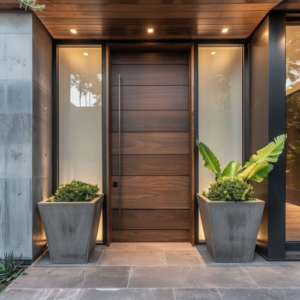Vastu for Homes:
Introduction:
Vastu Shastra, an ancient Indian architectural science, offer
s guidelines to create harmonious living spaces that balance the energies in your home. Rooted in the belief that our surroundings influence our well-being, Vastu provides principles that can enhance positivity, health, and prosperity in Indian homes. Whether you’re building a new home or renovating an existing one, incorporating Vastu principles can help you create a space that nurtures both mind and body.
Understanding the Basics of Vastu: Vastu Shastra is based on the five elements: Earth, Water, Fire, Air, and Space. These elements, along with the cardinal directions (North, South, East, West), form the foundation of Vastu. By aligning your home with these principles, you can ensure that the natural energies are optimized, leading to a more balanced and peaceful environment.
Key Vastu Tips for Indian Homes:
- Entrance:

- The main entrance is the gateway to positive energy. Ideally, it should face North, East, or Northeast to allow maximum sunlight and positive energy into the home. Ensure the entrance is well-lit, clutter-free, and welcoming.
Living Room:

The living room should be located in the North or East part of the house. This area should be spacious and well-ventilated to allow for free movement of energy. Use light colors on the walls and avoid heavy, dark furniture that can block energy flow.
3.Kitchen:

The kitchen represents the element of Fire, so it is best placed in the Southeast corner of the house. If Southeast is not possible, Northwest is the second-best option. The stove should be placed in such a way that the cook faces East while cooking, ensuring the flow of positive energy.
4.Bedroom:

The master bedroom should be in the Southwest corner of the home, providing stability and peace. The bed should be placed with the head facing South or East for a restful sleep. Avoid placing mirrors directly opposite the bed, as they can disrupt sleep by reflecting negative energy.
5.Bathroom:

Bathrooms should be located in the Northwest or Southeast direction. Ensure proper ventilation and drainage to avoid stagnant water, which can harbor negative energy. Keep the bathroom door closed when not in use to prevent the loss of positive energy.
Pooja Room:

The pooja room is the sacred space in your home. It should be located in the Northeast corner, known as the Ishaan corner, which is considered the most auspicious direction. Keep this area clean, clutter-free, and serene to maintain the flow of divine energy.
Colors and Décor:
Use Vastu-compliant colors like white, yellow, green, and blue to promote positive energy. Avoid using too much red or black in the main areas of the house. Incorporate natural elements like plants, water features, and crystals to enhance the flow of positive energy.
Conclusion: Vastu Shastra offers a time-tested approach to creating harmonious and balanced living spaces in Indian homes. By following these simple yet effective Vastu principles, you can design a home that not only looks beautiful but also promotes well-being, prosperity, and happiness for all its inhabitants. Whether you are constructing a new home or revamping your existing space, incorporating Vastu can help you create a sanctuary that aligns with the natural energies of the universe.
Call Us For your Interior Work
